Making Waves II
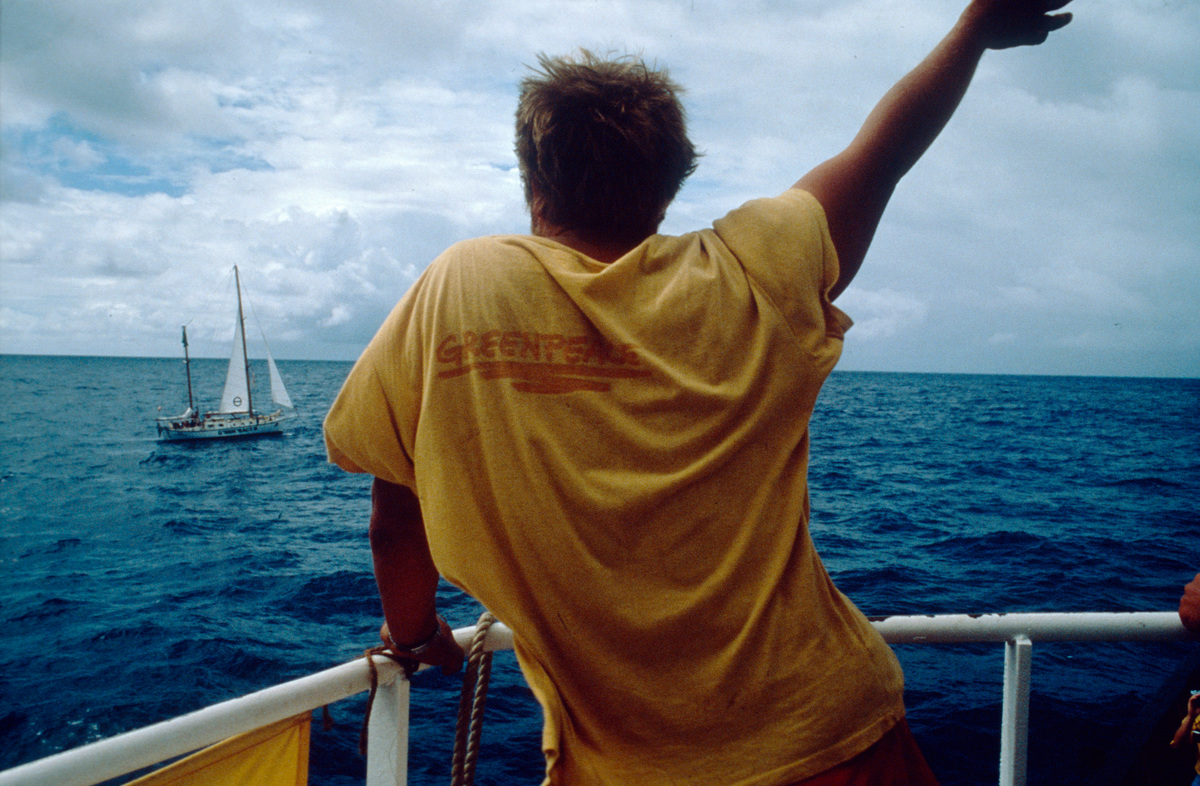
A history of Greenpeace Aotearoa / New Zealand from 1990 to 2020
Origins
For the past fifty years Greenpeace activists and campaigners have spoken truth to power, borne witness, marched, and stopped, blocked, and confronted environmental destruction. They have investigated and documented ecological contamination and crimes. And they have conducted scientific studies, litigated, and lobbied.
As Greenpeace commemorates five decades since its first boat set sail, we all face a gathering storm of accelerating habitat destruction and a deepening climate emergency. So, now is a time to look to the past for lessons on how to face the future, and to celebrate previous campaign successes.
It was on 15 September 1971 that a rag-tag bunch of sailors, mechanics, mystics, draft resisters, ecologists and hippies set out in a creaky wooden boat named ‘Phyllis Cormack’ with the first Greenpeace banner across its bridge. Their goal was to stop the world’s largest military superpower from detonating a nuclear weapon at a remote military site in Alaska called Amchitka.
They didn’t have much money and they didn’t have GPS, but they had the audacity of courageous idealism and the ‘people power’ behind them of a grassroots movement in British Columbia, Canada, that wanted to stop the US nuclear ‘war machine’.
Their voyage didn’t stop that specific nuclear test, but they started a global environmental movement that they named by combining two words: ‘Green’ and ‘Peace’.
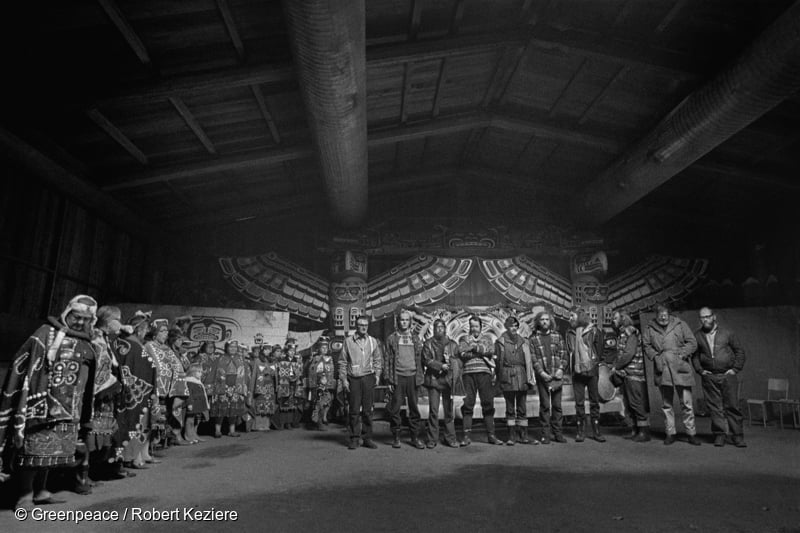
They also invented the ‘mind bomb’ – the idea that their actions could be communicated through the ‘mass media’ to change the mindset of a generation.
By doing so, they helped inspire millions of acts of courage in others who took to the streets to oppose future nuclear tests. As the public pressure grew to stop the tests, the US Government was forced to abandon its Amchitka nuclear test site “for political and other reasons”.
The Greenpeace campaign message quickly spread around the world and led to others launching their own water-borne campaigns, including in New Zealand against the French Government’s nuclear testing programme at Moruroa Atoll in the South Pacific, and then on the US West Coast against industrial-scale whaling in the North Pacific.
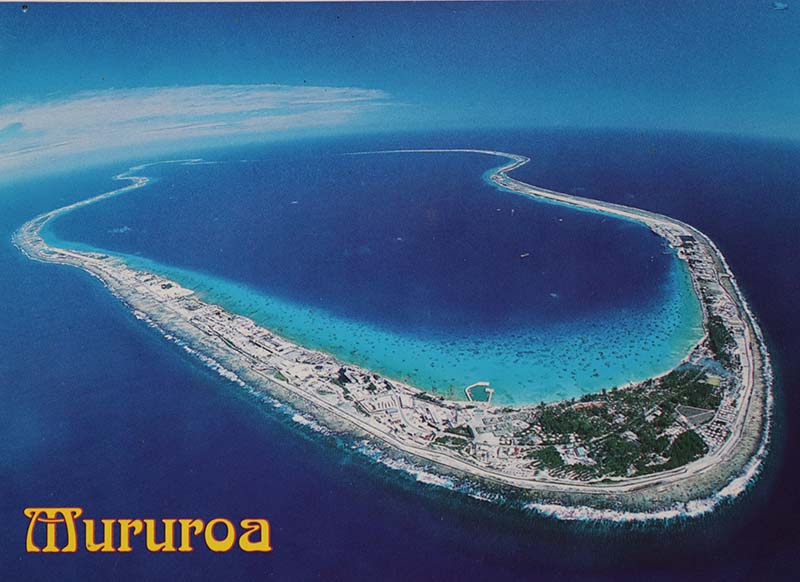
Looking back from the digital age, the Greenpeace ‘meme’ has helped make big environmental changes across the planet and those two words combined have become a household name.
Greenpeace now has three ocean-going boats and thousands of dedicated staff working in 57 countries – South, North, East, and West – who campaign to save the planet, and tens of millions of supporters who are active within a wider global mass movement that Greenpeace helped create.
The loose grassroots network that formed around the first protest voyages that sailed from New Zealand to protest against the French Government’s nuclear tests at Moruroa Atoll in the early 1970s led by David McTaggart and Anna Horne in SV Vega (a.k.a. Greenpeace III) and by David Moodie and Martini Gotje in SV Fri led to the founding of Greenpeace New Zealand as an incorporated society in 1974.
Since then, Greenpeace New Zealand, now called Greenpeace Aotearoa, has set up new campaigns to protect the Earth’s oceans, forests, climate, people, and wildlife from pollution, fossil fuels, deforestation, and genetic engineering.
It has recruited dozens of multi-skilled staff and is supported by a collective network of tens of thousands of people around Aotearoa, and works with an online social media community in the hundreds of thousands.
The ‘battle of ideas’
What, then, has been the secret of Greenpeace’s campaigns and the organisation’s longevity?
Is it the imaginative use of its boats? Standing up for the planet against the odds? Or a willingness to keep taking risks?
Or is it the ability to sustain long-term campaigns and build an enduring organisation that still values the courageous idealism of its origins? Or a willingness to think ‘outside the box’ and see beyond the comfortable myths that help to enable powerful vested interests to continue to harm the environment?
Greenpeace has identified half a dozen of these ‘mainstream myths’: “Endless growth is good”; “The ‘free market’ is the best way to organise the economy”; “We can consume our way to happiness”; “Having more bombs makes us safer”; “Businessmen are the best people to run our society”; and “Technology is the only thing that can save the planet”.
These myths, Greenpeace says, have often misdirected attention and action away from the most important issues, promoted fear-based thinking or indifference, and by disempowering people have helped to prop-up a system of environmental destruction by dismissing alternatives (and alternative thinkers) as either hopeless, misguided, or somehow dangerous.
Greenpeace has also worked with writer and educator Laura Hilliger on what they call ‘the seven shifts’ and has set seven cultural ‘waypoints’ for the transition to an open organisation.
In the ‘battle of ideas’ in New Zealand society, Greenpeace says that changing the old narratives around mainstream myths can help create the conditions for transformational change to occur. Greenpeace’s ideas – expressed through its campaigns – embody that ‘struggle’, in equal parts critique and solution.
Greenpeace also has a knack for reframing narratives and developing new messaging, and has been skilled at communicating its ideas in easy-to-grasp ways – through compelling images, catchy slogans, snappy memes, and potent mind-bombs.
If ‘The Medium is the Message’, then Greenpeace has also helped to redefine environmental campaigning over the past 30 years.
The campaigning environment
The campaigning environment in which Greenpeace found itself in 1990 was very different to its origins in the early 1970s.
In 1990 New Zealand was still in the cold ideological grip of ‘Rogernomics’, a free-market political ideology that took its direction from the monetarist economic theories promoted by the US-based International Monetary Fund (IMF).
Rogernomics itself was named after Roger Douglas, the Finance Minister in the two NZ Labour governments of the 1984-1988 period, who then split from the Labour Party.
Like the IMF, his mantras were deregulation, slashing subsidies, corporatisation and privatisation of state-owned assets, rolling back the state, and the pursuit of endless economic ‘growth’.
These mantras in turn led to fundamental reforms of the fishing, agriculture, energy, and forestry sectors in New Zealand at that time. They were also translated into abstract concepts (such as ITQs and MSYs) that were used to privatise and create a tradeable market in fish ‘quotas’ within a new fisheries ‘Quota Management System’ (QMS) in 1987.
The theory behind it was that the State would be a ‘neutral’ regulator giving individual transferable quotas (ITQs) to fishing companies that permitted them as the quota holders to catch a proportion of a total allowable commercial catch (TACC), set for a specific fish stock by the supposedly ‘neutral’ regulator. In reality, the State was governed by elected politicians and the Minister of Fisheries set the TACCs, and since the QMS was set up there has been a documented history of some of the big fishing companies or their directors donating funds to parliamentary candidates. If the politicians in government accept donations from powerful players within the fishing industry, how can the decisions they make about fisheries quotas be described as neutral?
Under the QMS, the ITQs can be bought, sold, or leased in the same way that property can be. According to the ideology of Rogernomics, owning a property right should give the quota holder an incentive to fish their quota ‘sustainably’ because if they do not, they will be harming the value of their own ‘asset’ (although the reality has turned out to be rather different, with a small number of the bigger fishing companies owning or leasing the lion’s share of quota in a marketplace that allows overfishing and harmful fishing methods to damage or destroy marine habitat, including killing marine wildlife as so-called ‘bycatch’).
The state-owned NZ Electricity Department was restructured into a state-owned enterprise (SOE) called ECNZ or Electricorp in 1987, as a step on the way to its eventual privatisation in the 1990s. The state-owned Coal Mines Department was restructured into an SOE called Solid Energy. Petrocorp, formally the Petroleum Corporation of New Zealand Ltd – another SOE which owned major NZ oil and gas resources – was also privatised when it was sold to Fletcher Challenge Ltd in 1988.
The 1984-87 Labour Government also restructured the Department of Lands and Survey’s commercial farming arm into a new SOE called Land Farming Ltd or Landcorp in 1987, and removed public subsidies in the mid-1980s, which temporarily led to a reduction in fertiliser and pesticide use, and some livestock numbers.
The National Government elected in October 1990 continued to pursue free market policies with a new Finance Minister, Ruth Richardson (1990-1993). Her version of Rogernomics was dubbed ‘Ruthanesia’. She was succeeded as finance minister by Bill Birch (1993-1999) in the next two National-led Governments, which split Electricorp into smaller units which it then privatised in the late 1990s (Mercury Energy, Mighty River Power, Meridian Energy, Genesis Energy).
The state-owned NZ Forest Service was disbanded in 1987 and restructured into the Forestry Corporation or Forestcorp. Large areas of publicly-owned native forest were transferred to the new Department of Conservation in 1987. Some of the remaining exotic and native forests on the West Coast of the South Island were restructured into a new SOE called Timberlands West Coast ‘Ltd in 1990. The National Government privatised most state-owned forestry assets between 1990-1992, and then privatised Forestcorp in 1996.
This was the economic, political, and regulatory ‘environment’ that Greenpeace’s campaigns operated within during that period, which meant that its campaigns were part of a broader struggle over how the environment, energy, fisheries, forestry, and farming were owned and run in New Zealand.
Through its New Zealand campaigns, Greenpeace implicitly challenged the mantras of the dominant free market ideology, and asserted that defining the environment as a set of ‘resource assets’ to be traded as commodities had a high cost for our ecosystems, wildlife, health, and well-being, and that nature had real ecological limits.
Greenpeace also reminded government and industry that the environment was not able to endlessly absorb and dilute toxic chemicals, sewage effluent, plastic pollution, and carbon emissions, and that there would not always be ‘more fish in the sea’ if our fish stocks were overexploited. These were, Greenpeace pointed out, compelling reasons to use smart regulation to achieve better environmental protections and genuine sustainability.
Culture and organisation
What about the internal organisation and culture of Greenpeace itself?
That had also changed over time. Greenpeace had grown into a relatively large global organisation by 1990 with offices in over 30 countries, an annual global budget in the tens of millions, a small fleet of boats, and hundreds of paid staff.
Greenpeace New Zealand itself was relatively small compared to larger northern hemisphere Greenpeace organisations but on a per capita basis it had a lot of supporters, and was relatively large compared to other New Zealand ENGOs.
There was a clear synergy between Greenpeace NZ’s staff and Greenpeace International (GPI), and vice versa.
The 1985 bombing of the Rainbow Warrior by French DGSE agents in Auckland had also brought the international organisation closer to Greenpeace NZ, quite literally in the case of Steve Sawyer, who was campaigner on board the Rainbow Warrior in 1984-85 and who went on to become GPI Executive Director in the period 1987-1992, and Duncan Currie, who worked on Greenpeace’s legal team after the bombing and subsequently became GPI’s Legal Adviser, and has been a long-time legal adviser to Greenpeace NZ.
Several GPI-funded regional campaigns were based out of New Zealand by 1990: Antarctica, Pacific, and French Nuclear Testing, as well as a Marine Division desk. Their presence helped create a new ‘critical mass’ that benefitted both Greenpeace NZ and GPI.
Some Greenpeace NZ staff had either previously worked in other Greenpeace national offices or GPI, or were seconded to New Zealand. Some Greenpeace NZ staff also went on to work in other national or regional offices, or for GPI, such as Roger Wilson, Bunny McDiarmid, Stephanie Mills, Kirsty Hamilton, Janet Dalziell, Mike Hagler, Grant Rosoman, Rob Taylor, Sarah Duthie, Sue Connor, Karli Thomas, and Carmen Gravatt.
Antarctic expedition crews in the late 1980s and early 1990s were based in NZ, comprising a mixture of Greenpeace NZ and international staff.
Within Greenpeace NZ there were other internal cultural shifts in the 1990s. At a time when the staff was almost exclusively Pakeha, Greenpeace NZ recruited its first Māori executive directors – Cindy Kiro (1992-94) and then Ella Henry (1994-96) – and Māori staff members Hugh Sayers, Grant Pakihana Hawke, and Nikki Searancke. Cindy Kiro was also elected to the Board of Greenpeace International in 1993.
Another shift has been that five of the six executive directors appointed by the Greenpeace NZ Board since 1990 have been women: Cindy Kiro, Ella Henry, Di Paton, Margaret Crozier, and Bunny McDiarmid.
Pasifika staff were also recruited into Greenpeace’s Pacific Campaign team and to work on the Greenpeace boats that operated in the region, including Pene Lefale, Tamsin Vuetilovoni, Maureen Penjueli, Philip Pupuka, Anj Heffernan, Nainasa Whippy, Lawrence Makili, Chris Shigetomi, and Tino Tetuanuitefarerii.
Greenpeace NZ also developed greater capacity in areas such as IT, communications, membership outreach, and fundraising.
Greenpeace NZ’s office in Valley Road, Mount Eden in Auckland had its own solar electricity system by 1998 which coincided with Greenpeace’s boats integrating more state-of-the-art sailing and cruising technology into their operations to minimise their impact on the environment. The most recent addition, SV Rainbow Warrior III, motors on biodiesel when not under sail.
Greenpeace NZ Incorporated is an independent, not-for-profit organisation affiliated with Amsterdam-based Greenpeace International and 48 other Greenpeace national and regional offices that work in 57 countries around the world.
Greenpeace NZ’s executive director and senior staff work collaboratively with GPI, and with their Greenpeace counterparts in other countries and regions, to develop and implement global strategies and plans. While Greenpeace NZ is an autonomous organisation, its campaigns, fundraising, and administration also align with the framework and policies agreed by the organisation globally.
Greenpeace NZ’s Board is elected by a Voting Assembly of 35 people from Greenpeace NZ’s supporter base, five staff from other Greenpeace offices, and 10 former Greenpeace NZ staff who left more than a year previously. The Board comprises six directors who are elected at the Annual General Meeting, each for a term of three years. They ensure the organisation is being managed in an effective and ethical manner, and in accordance with Greenpeace’s objectives.
Greenpeace NZ’s Executive Director, currently Dr Russel Norman, is responsible for overall management of the organisation. The Executive Director reports to, and is hired by, the Board.
The current Greenpeace NZ Board Chair is David Tong and the other members are Catherine Delahunty, Rahul Watson Govindan, Pania Newton, Melanie Rands, Bill Sinclair, and Tui Warmenhoven. Biographical details of the Greenpeace NZ Board members are posted here.
In November 2020, Greenpeace New Zealand changed its name to Greenpeace Aotearoa.
Greenpeace has always had a strong maritime dimension because of its use of boats, which is reflected in the extensive maritime experience of many of the people who have played an important role in Greenpeace’s work within New Zealand and the wider South Pacific and Southern Ocean regions, such as David McTaggart, Martini Gotje, Anna Horne, Henk Haazen, Bunny McDiarmid, Naomi Petersen, Daniel Mares, John Simpson, Sue Ware, Chris Robertson, Alice Leney, Bob Graham, and Derek Nicholls.
Two early 1970s Greenpeace founders in Canada, Robert Hunter and Rex Weyler, were journalists and ecologists who had an influence on the trajectory of the global organisation, with its strong emphasis on ecology and communications via news media. That was augmented in the 1990s and 2000s by email, the Internet, social media, instant satellite communications, and the huge proliferation of media channels.
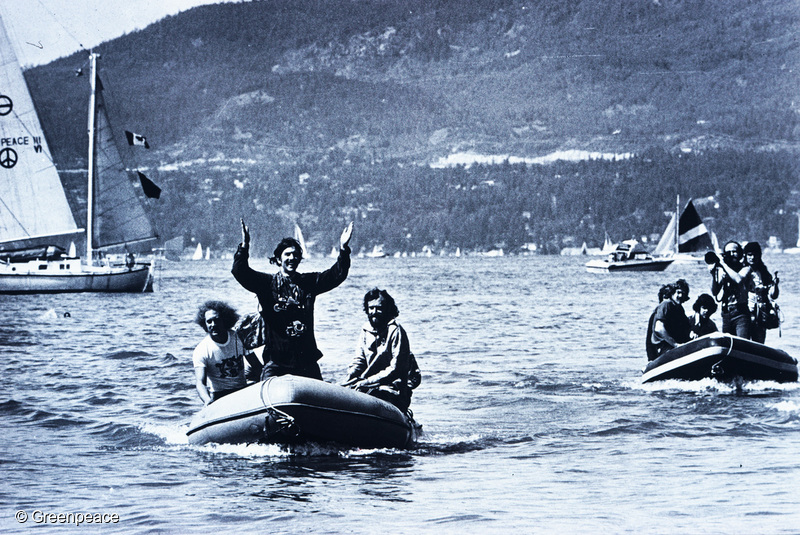
Greenpeace New Zealand has also had its share of journalists in its ranks, including Mike Hagler, Stephanie Mills, Cindy Baxter, Margaret Baker, Michael Szabo, Mark Derby, Adelia Hallett and Stephen Butler, and has worked with many talented photographers and photo-activists over the decades, including Fernando Pereira, David Robie, Gil Hanly, John Miller, Michael Dean, Dr Roger Grace, Lorrette Dorreboom, Steve Morgan, Bas Beentjes, Mark Adams, Haru Sameshima, Ann Shelton, Dave Hansford, Malcolm Pullman, Jos Wheeler, and Nigel Marple.
Digital communications and social media have been an intrinsic part of Greenpeace NZ’s campaigns over the past two decades, which since 2001 have been led by the now Head of Communications Nick Young. Graphic designers have also played an important part in the production of campaign materials and publications, such as John Ringer and the team at Paradigm Design.
There have also been plenty of scientists and ecologists, including Gordon Jackman, Dr Maj De Poorter, Dr Allan Hemmings, Dr Peter Wills, Pene Lefale, Ricardo Roura, Meriel Watts, Grant Rosoman, Dr Roger Grace, and Bryan Coffey, as well as lawyers and legal advisers, including Duncan Currie, Royden Hindle, Grant Hewison, Sue Connor, and Kate Simcock.
Campaigners and community organisers have included people with extensive experience in social, peace, and environmental activism, including Grant Pakihana Hawke, Jacqui Barrington, Catherine Delahunty, Steve Abel, Chris Hay, Dean Baigent-Mercer, Mike Smith, and Niamh O’Flynn.
Actions and expedition coordinators have included Henk Haazen, Rien Achterberg, Rob Taylor, Roscoe Smith, and Chris Hay, and there have been policy and political advisers including Roger Wilson, Dr Allen Hemmings, Dr Maj de Poorter, Geoff Keey, Nathan Argent, and Amanda Larsson.
Educationalists, teachers and lecturers have included Gordon Jackman, Catherine Delahunty, Nicola Easthope, Jess Tooker, Brian Harris, Pauline MacDonald, and Robyn White.
Greenpeace New Zealand has also had organisational leaders with high academic qualifications in Cindy Kiro and Ella Henry, and now Dr Russel Norman.
So, it is an organisation whose leaders and staff have a multi-faceted skill set, diverse professional experience and qualifications, and which has consistently reinvented itself with both a younger generation of activists and seasoned campaigners, all with diverse backgrounds and biographies.
The most important campaigns 1990-2020
What, then, is it that has made Greenpeace New Zealand’s campaigns so effective over the past three decades?
There is no simple, single answer to that question, but rather a diversity of views on what the important campaigns have been and why they were successful.
Five senior Greenpeace New Zealand staff – past and present – give their views here:
Stephanie Mills
GPI Nuclear Test Ban Campaigner 1990-1992, Greenpeace NZ Campaign Manager 1992-1999, GPI Nuclear Campaign Director 1999-2003, Greenpeace NZ Board member 2010-2019, and Greenpeace NZ Board Chair 2015-2019.
![Greenpeace Nuclear Test Ban Campaigner Stephanie Mills aboard SV Rainbow Warrior II, in Tahiti, August 1995 [photo by Steve Morgan]](https://www.greenpeace.org/static/planet4-history-aotearoa-stateless/2021/08/344134ce-gp0u3x_web_size_with_credit_line.jpg)
“Looking at the period 1990-2000, the 1990 driftnet fishing campaign in the Tasman Sea that led to a high seas driftnet fishing ban in 1992 was a major success, protecting the global marine environment, and putting ocean protection issues in our own backyard on the public agenda.”
“Even closer to home, Greenpeace’s legal action seeking a judicial review of the bottom-trawled Orange Roughy fishing quota helped to persuade the Fisheries Minister to cut Orange Roughy and Hoki quotas, and resulted in a ruling that gave more emphasis to the use of a precautionary approach in setting future quotas.”
“In the Southern Ocean, the work of Greenpeace’s Antarctic campaign and its various expeditions based out of New Zealand led to the historic 50-year ban on oil and minerals exploitation there, encoded in the new Environmental Protocol to the Antarctic Treaty in 1991.”
“Exposing and documenting Soviet longlining vessels targeting Patagonian Toothfish and killing non-target albatrosses by campaigners en route to the Antarctic Peninsula in 1991 helped Greenpeace develop a broader ecosystem approach to its campaign work in the Southern Ocean. It also pointed the way to the campaign launched in 1997 to protect Southern Bluefin Tuna and non-target albatrosses and sharks from longlining fishing vessels.”
“The anti-whaling actions carried out during the Antarctic expeditions in the early 1990s saved the lives of many whales, and led to a successful Southern Ocean Whale Sanctuary campaign. Greenpeace New Zealand played an important role in promoting the Sanctuary domestically, and in exposing the use of NZ ports by whaling resupply support vessels – which was occurring in contradiction to overwhelming public opposition to whaling among New Zealanders.”
“The Toxics Campaign challenged the NZ forest and agriculture industries’ use of toxic chemicals, and the way that waste and sewage was being dumped into the environment.”
“Its work on PCP contaminated sites also led to the Government’s funding of an Organochlorines Programme, followed by a policy to phase-out organochlorines, and the introduction of contaminated soil treatment technology in NZ.”
“New Zealand campaigns targeting pulp and paper pollution, waste incineration, and the export of organochlorine pesticides pressured the NZ Government to sign the Stockholm Convention on Persistent Organic Pollutants (POPs) in 2001, which had the aim of eliminating toxic dioxin pollution and rapidly implementing a phase-out.”
“A key initiative contributing to the Toxics Campaign’s successes was the establishment of the Mana Tangata team in 1993. The team’s focus was on working alongside local communities, particularly Hapū and iwi, impacted by polluting industries.”
“During the Tarawera River campaign, Greenpeace’s advocacy and legal work pressuring the company and the regulator to clean up pollution of the river was complemented by Mana Tangata’s work with the local community and Te Tatau Pounamu o te Awa o te Atua.”
“Mana Tangata built community alliances to support the Oceans Campaign and whale sanctuary work, and the ‘Sink to Sea’ education project. They also organised nationwide tours to help grow and connect community activism, and developed education work that led to the nationwide ‘Green Team’ youth environment network.”
“The Climate Campaign ran a dual strategy in the early 1990s, publicly targeting new fossil-fuelled power stations, and taking legal action through the RMA.”
“The campaign was successful in opposing a giant dam being built in the Ngakawau Gorge, which would have drained 23 West Coast rivers and flooded 2,500 hectares of native forest that was habitat for endangered bird species, and in opening up the RMA process for the Stratford gas-fired power station to include climate change considerations.”
“Later, in 1997, Greenpeace activists blocked the Stratford gas-fired power station’s generators being unloaded in the Port of Taranaki, and in 1998 during SV Rainbow Warrior II’s tour, the campaign team ‘unplugged’ Fletcher Challenge Energy’s seismic testing cabling in Taranaki. Promoting solutions was the other important arm of the Climate Campaign, which included promoting solar energy through the mobile Solar Café, solar actions targeting Parliament and Mercury Energy, the Solar Pioneers project, and the solarisation of Greenpeace’s Auckland office.”
“Greenpeace New Zealand’s origins were in the campaign against the French Government’s nuclear testing programme at Moruroa in the early 1970s, so it made sense that when Greenpeace globally re-focussed on a nuclear test ban in 1990, that it also became central to Greenpeace New Zealand’s work.”
“That included a sustained organisational commitment to sending SV Rainbow Warrior II to Tahiti and Moruroa Atoll between 1990 and 1995, advocacy to the NZ Government, and working with the anti-nuclear movement in Tahiti/Te Ao Maohi.”
“Greenpeace New Zealand also maintained wider connections in the region through Greenpeace’s Pacific Campaign, and worked closely with the global Greenpeace network, particularly colleagues in The Netherlands, France, Britain, and the US. Greenpeace’s test ban campaign was instrumental in pressuring the French Government to join the Soviet-declared moratorium in 1992, that in turn led to the US and UK joining it in 1993.”
“The resumption of French nuclear testing for a final ‘season’ at Moruroa Atoll in 1995 was a shock setback to that progress. Greenpeace dispatched SV Rainbow Warrior II to Tahiti and Moruroa at short notice to spearhead a campaign against the tests.”
“The disproportionate and aggressive French military response – ramming and seizing Greenpeace’s flagship with armed commandos using smoke grenades and axes – went viral and drew strong condemnation around the world. That sparked a new wave of protest that resulted in a Pacific Peace Flotilla of 30 boats sailing to Moruroa, and an even larger global mobilisation against the tests, including delivering a hard copy petition against the tests to French President Jacques Chirac in Paris that had been signed by five million people worldwide.”
“The campaign succeeded in reducing the number and combined yield of that final nuclear test ‘season’, and pushed the French Government into taking bolder disarmament steps immediately afterwards, including signing the South Pacific Nuclear Free Zone Treaty and stopping the production of enriched Uranium for nuclear warheads in 1996. Ultimately, the campaign galvanised global pressure for the agreement of a zero-threshold Comprehensive Test Ban Treaty at the UN a few months later, which had long been the goal of Greenpeace’s nuclear campaign.”
“The campaign against nuclear weapons testing had given Greenpeace visibility and credibility in the region, but it was the Pacific Campaign’s commitment to working at the community level on local issues that cemented its credibility in Pacific communities there.”
“That included helping to develop markets in the US and NZ for tapa cloth made by the Maisin community who wanted a way to generate a sustainable income while protecting their forests in the Collingwood Bay region of Papua New Guinea (PNG).”
“The Pacific Forests Campaign based out of the Greenpeace office in Auckland also did important work with local campaigners and partners in the Solomon Islands and Papua New Guinea to develop a certificated ecotimber system through the FSC. Meanwhile, work on the toxic waste trade and coral bleaching also helped the campaign to develop alliances with Pasifika NGOs and governments.”
“Meanwhile, although nuclear testing had ended, shipments of highly radioactive Plutonium and nuclear waste between the British and French Plutonium factories at Sellafield and Cap La Hague and Japanese nuclear power stations such as Fukushima had resumed. The experience of the Pacific Peace Flotilla at Moruroa came back to life as Greenpeace worked with the Nuclear-Free Tasman Flotilla of independent sailors and their boats to monitor and oppose the shipments travelling through the Tasman Sea, which inspired others elsewhere.”
“In the late 1990s, the threat of poorly controlled genetic engineering (GE) field trials of crop plants led to a new phase of Greenpeace’s GE campaign. The early phase of the GE campaign focussed on exposing the risks and locations of GE field trials. As the campaign gathered momentum, it was successful in calling for a GE moratorium, and helped point the way towards the larger GE campaign developed by Greenpeace NZ through the early 2000s that targeted high-profile brands and included important mass mobilisation marches as expressions of people power.”
“A new round of oil exploration in New Zealand triggered a push opposing new offshore oil exploration off Taranaki in 1998, and the campaign team helped stop a proposed $223 million coal-fired waste incineration-to-energy scheme at the mothballed Meremere power station near Auckland in 1997-99.”
“Through all of these campaigns, Greenpeace NZ made prominent use of Greenpeace’s boats. Whether to support non-violent direct action, involvement with local communities, engagement with iwi, or political and legal advocacy, the boats were literally flagships for the campaigns, and a critical part of Greenpeace’s ability to amplify its campaign messages to the public.”
Stephanie Mills worked for Greenpeace International and Greenpeace New Zealand from 1990 until 2003, and later served on the Greenpeace New Zealand board from 2005-2019, including as Board Chair from 2014-2019. Since 2004 she has worked for New Zealand’s largest union, the NZ Educational Institute (NZEI Te Riu Roa), where she is Director of Campaigns.
Chris Hay
Actions Coordinator 2000-2013 and Programme Director 2016-2019.
“The oil campaign that ran from 2011 to 2017 was Greenpeace’s most publicly visible campaign of that period. After Petrobras pulled out after a 42 day at-sea blockade, we continued onto the next new oil exploration campaign [Anadarko], and the next one [Statoil].”
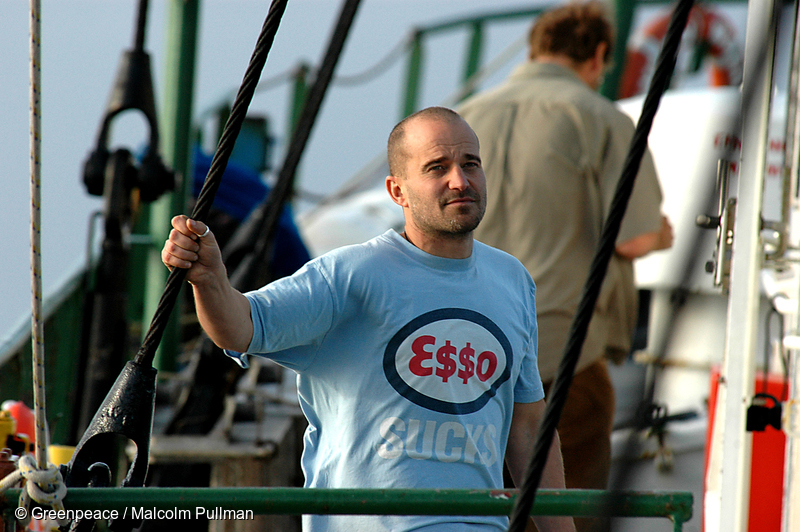
“Jo McVeagh was Greenpeace’s Volunteer Coordinator. She used that role to help set up the Oil-Free network as a loose alliance. That also involved non-violent direct action training, banner making training, and the sharing of technical information and sometimes the loaning of our equipment, so the campaign spread and became viral, and success bred success.”
“The other reason the oil campaign worked is that it was strategic. It was Simon Boxer who developed the political strategy.”
“Greenpeace was able to demonstrate that New Zealand was a poor bet for oil because of the strong opposition to it, the fact it’s a long way from their main markets, and the relatively high costs of working in a distant ‘frontier’ area. That created uncertainty about the soundness of the investment for them.”
“The NZ Government also overplayed its hand and overreacted when it sent in the Navy and arrested Elvis Teddy of Te Whanau-a-Apanui on San Pietro in 2011.”
“It was a David and Goliath confrontation like the first protest boats that went to Moruroa in the early 1970s. It was risky and there was no guarantee of success. It was like Greenpeace was back in the early 1970s.”
“In the 2015 documentary ‘How to Change the World’ there’s a quote from the early days of Greenpeace in North America from when someone said, ‘We need mystics and mechanics’. The Flotilla protests also reminded me of that.”
“The oil campaign was not risk-averse and there was an important willingness at the level of the Greenpeace New Zealand Board and the Executive Director to back the Senior Management Team and staff in taking the actions they did over a prolonged period of time. We also had a really solid crew of people working on the campaign.”
“The key to its success was our tenacity and our collective commitment to campaign against deep sea oil for a prolonged period.”
“Before I worked for Greenpeace, I did an MA in Politics and then got involved in the successful Native Forest Action campaign against rainforest logging on the West Coast by Timberlands in the late 1990s. A group of us working for Greenpeace during the 2000s all came from that campaign, including Logan Petley, Dean Baigent-Mercer, Annette Cotter, Nick Young, and Steve Abel.”
“When the Government announced its plans for mining on conservation land, Steve Abel read the room well on it, and Greenpeace called the 1 May 2010 march against those plans in collaboration with the other environment and conservation groups. We had two weeks to organise for it which was a huge amount of work. The Key Government was arrogant and they also overplayed their hand on that.”
“Ship actions are Greenpeace’s forté, with all the boats, inflatables, and climbers, so the palm kernel expeller (PKE) campaign we ran fitted well with that.”
“The PKE campaign work also gave Greenpeace a new way into the debate about dairying and climate change, and that developed into the broader agriculture campaign that exists now.”
“We got New Zealand’s biggest farmer – Landcorp – to drop using PKE and there is less PKE used in NZ as a result of the campaign.”
Carmen Gravatt
Greenpeace NZ Campaign Director 2007-2016 and Greenpeace East Asia Programme Director 2016-2020.
“The campaign against new oil exploration was central during the last decade [2010-2020] for Greenpeace NZ, especially the work Mike Smith did with iwi.”
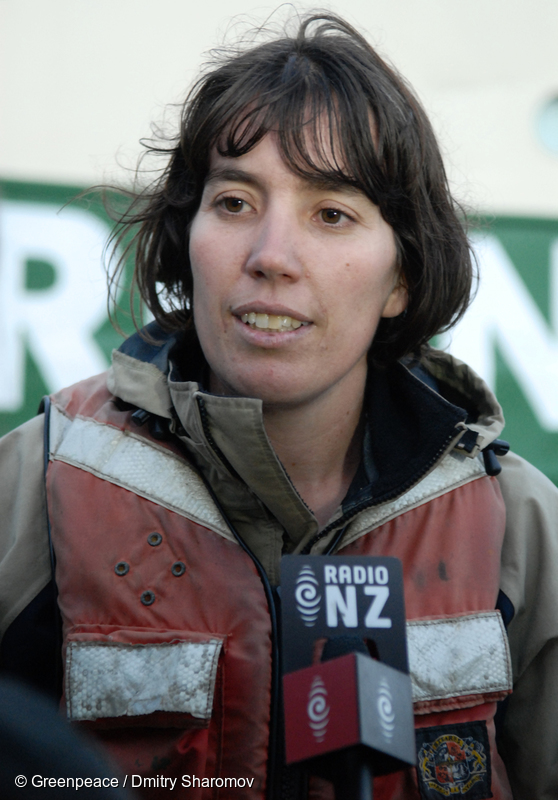
“Our ability to build strong alliances, be it in the courtroom, or at Parliament, or on the water taking action, and mobilising tens of thousands on the streets demonstrates the unrelenting power of a strong movement.”
“The campaign against bottom trawling on seamounts with SV Rainbow Warrior II to expose the impacts was also important. The fishing industry kept lying about the impacts of bottom trawling on seamount habitats and deep water corals, so that work with the Warrior was also important in showing the public and decision-makers what was really going on.”
“I think Greenpeace New Zealand is a combination of good people, good thinking, good planning, and sometimes good luck. You never know if a campaign is going to be successful or not, but passion, smarts, and optimism go a long way.”
“There was also the Auckland waste incinerator shutdown in 2002. We pushed the company hard enough to make them change to steam sterilisation.”
“Industry often underestimate Greenpeace New Zealand and how smart Greenpeace is as an organisation. We are more strategic than they think, with an analysis of power and how decision-making works.”
“The Marsden B power station occupation became a big iconic action and we won that campaign too.”
“There was also the Toxics Campaign work in the early 2000s, taking the stories of people who were not being listened to by news media and decision-makers to make them more visible so they could be heard and prompt action. That work was collaborative and supportive of people like Joe Harawira, one of the most inspiring change makers I’ve ever met.”
“Steve Abel is a master of marches and played an instrumental role in uniting New Zealanders. The 40,000 strong anti-mining march in Auckland on 1 May 2010 was a phenomenal show of New Zealanders’ love of nature.”
“‘The Crossing’, where Greenpeace followed a Shell drilling rig across the Pacific from Malaysia to Seattle in the US, shone a bright spotlight on Shell. It helped inspire the big kayakers’ protests in Seattle. Led by Greenpeace New Zealand, it was a great example of how much global impact a small team from the bottom of the world can have.”
“The action with Lucy Lawless in Taranaki that targeted Shell was similar. The team stayed on the drill ship for four days, kicking off the start of a multi-year campaign supported by millions that ultimately led to Shell pulling out of the Arctic”.
“There was also the work that Rob Taylor and Suzette Jackson did uncovering and documenting the impact of deforestation and palm oil plantations in Indonesia, and the link to palm kernel expeller (PKE) use in the New Zealand dairying sector.”
“And there was also the important global tuna campaign led by New Zealand, that included New Zealanders Karli Thomas and Sarah Duthie. They both did great work on that in New Zealand and the wider Pacific region.”
“I also think that over the years, Kiwi women have played a major role in Greenpeace New Zealand, and in Greenpeace International too. New Zealanders are good at diplomacy and we ‘know how to get things done’! We are proud standard bearers for the Kiwi spirit – the ‘against the odds’ spirit – and we understand that passion and hope is essential to all campaigns.”
Carmen Gravatt became Programme Director for Greenpeace East Asia in 2016.
Bunny McDiarmid
GP Pacific Co-ordinator 1986-1998, Greenpeace NZ Campaign Director 2004, Greenpeace NZ Executive Director 2005-2015, and GPI Co-Executive Director 2016-2019.
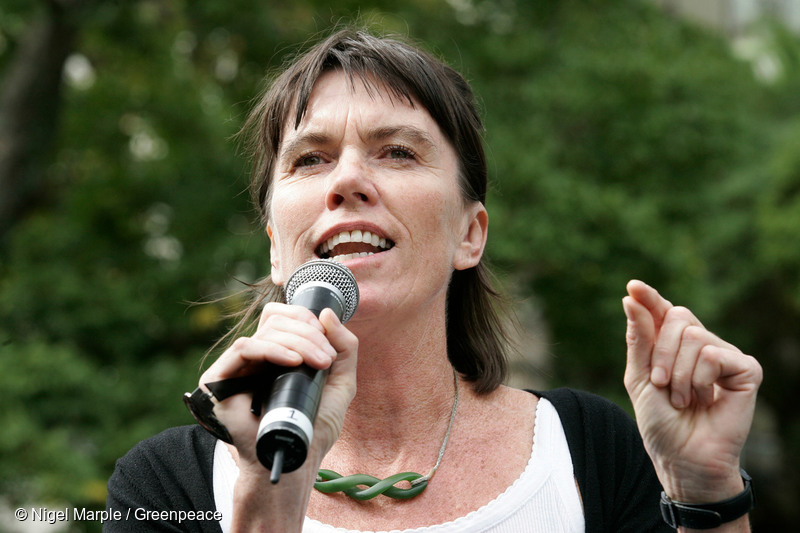
“The campaign against new deep sea oil exploration was a really significant campaign.”
“We hired Mike Smith before that campaign started [in 2011]. He brought something to Greenpeace that had not been alive since the days of Mana Tangata.”
“He operated outside Greenpeace from his place in Northland and did really good work. He had a relationship with the local community in the Bay of Plenty and East Cape. They and he ‘had each other’s back’.”
“Greenpeace and Te Whanau-a-Apanui had a solid partnership in the campaign to prevent Petrobras from establishing oil exploration off the East Cape. Respectfully and in solidarity, we talked things through and stuck together through thick and thin.”
“The bottom trawling campaign was also a really significant campaign. The timing of the finding of a bottom trawler bringing up deep water coral was fortuitous [coinciding with a UN General Assembly vote on a resolution calling for a ban]. The work our campaign team did at sea with SV Rainbow Warrior II exposed the lies of the fishing industry about the impacts of bottom trawling on deep sea ecosystems.”
“When I was Executive Director, I had a great Senior Management Team (SMT). Carmen Gravatt, Amanda Briggs-Hastie, Katya Carson were all solid, caring, smart women. They almost made me feel redundant and we often talked about how a competent SMT had to be mindful of leaving space for other people to be the leaders.”
“The work and skills that Nick Young brought made a big difference to our campaigning. He tracked public opinion, was tuned into it, but more importantly was always looking to improve the ways we communicated and allowed people to campaign with us.”
“‘The Crossing’ was another important campaign when a team of Greenpeace activists boarded Shell’s exploration drilling rig Polar Pioneer while it was en-route to begin oil drilling in the Arctic, crossing the Pacific Ocean in April 2015. Rob Taylor, Carmen Gravatt, and Nick Young were the backbone for that. They put the ‘people taking action’ into it rather than the ‘Greenpeace’. It was a big contribution from a small team in NZ to a global campaign.”
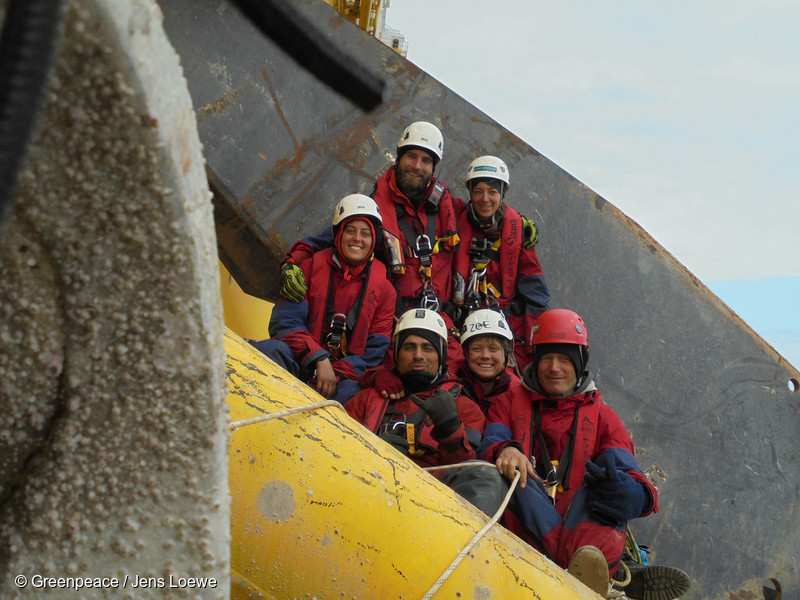
“‘The Crossing’ had a combination of commitment and risk, and it pushed the boundaries of Greenpeace actions. The campaign kept the voice or narrative of the activists’ as a central piece.”
“I’m eternally grateful to Stephanie Mills who was my board chair. She is someone who understands campaigns, asks the hard questions, and understands the international aspect of Greenpeace – of being part of an international effort, something bigger than ourselves, and making decisions in the interest of the broader international dimension.”
“We were a small team in the bigger global organisation with a reputation for being smart, ‘ballsy’ campaigners, and respected for choosing what often served the common good better than our own local interests. We couldn’t have done all that we did without a board and board chair who understood that.”
“The collective experience of Greenpeace across the decades has been important too.”
“Our Actions Coordinator Rob Taylor found us a great new building when we needed one and it made all of us at Greenpeace New Zealand into a team because we did a lot of the work ourselves, refurbishing it and moving into the building. Together we created a really good working space and the process built us into a stronger, better connected team.”
“When we bought the office we got in Alice Leney [former Greenpeace New Zealand Climate Campaigner and SV Rainbow Warrior II crew member] to solarise it as he had done with the previous office, but with additional capacity and modifications to improve it.”
“The Nuclear-Free Tasman Flotilla campaign opposing the shipment of Plutonium and radioactive waste through the Tasman Sea by British Nuclear Fuels Ltd also brought a lot of people into campaigning with us in 2001 and 2002.”
“That involved Henk Haazen, Daniel Mares, Richard Allen and David Waters from Waiheke and SV Vega and SV Tiama, Dave Armstrong and SV Secret Affair, Avon Hansford from Whitianga and his boat SV Windborne, and the German yacht, SV Infinity and others.”
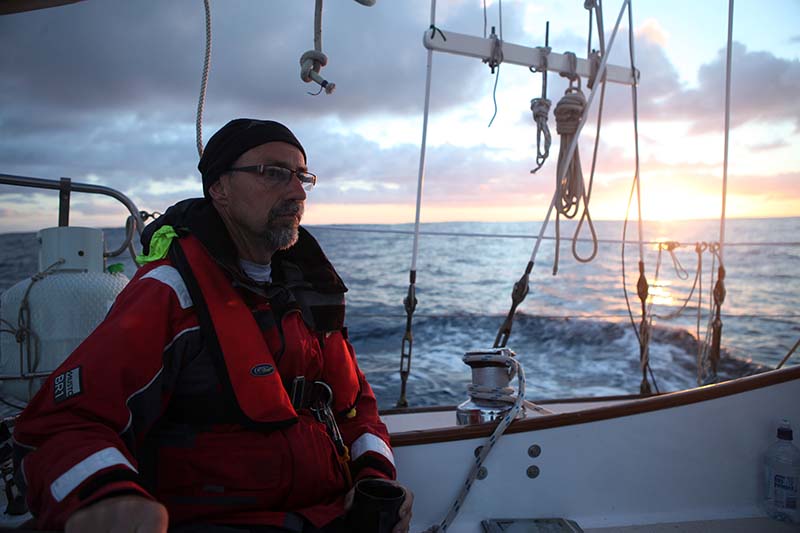
“Henk was the key to keeping the thread and connections with people from the earlier Moruroa campaigns that had also involved flotillas.”
“Later on, came the Oil Free Seas Flotilla which many of the same sailors and yachts participated in. That campaign also saw the involvement of and partnership with Te Whanau-a-Apanui and the inclusion of Elvis Teddy with his fishing boat San Pietro.”
“It was also important for Greenpeace to give support to the oil-free seas groups in other places like Dunedin. We combined resources with local communities on that campaign, just as Mike Smith and Hinekaa Mako were working with Māori communities.”
“We also made efforts to work with influencers such as Lucy Lawless, Tiki Taane, Geoff Ross, Stephen Tindale, and Robyn Malcolm to reach out to an even wider network of communities on climate change, running the ‘Sign On’ petition campaign
“Then the big 40,000+ anti-mining march in Auckland on 1 May 2010, which happened after our ‘Sign On’ campaign, reached out and brought together an even bigger network and mix of diverse interests.”
“At the time, Gerry Brownlee tried to disparage the march by saying that we were, ‘marching against everything’ but he didn’t realise that that was the point. It was so big because the National-led Government with its plans to allow drilling for new oil in deep waters and on public conservation land, incensed a broad range of people for different reasons but that added up to a large number of ‘cross’ people.”
“And then there was the Oil-Free Seas flotilla campaign against Anadarko the following year when Henk stepped up to help organise another flotilla. I called Jeanette Fitzsimons about joining us at sea on SV Vega and she didn’t hesitate. She had retired from Parliament by then and was a highly respected figure, and the climate change issue was one of her passions.”
“We sailed from Auckland to Wellington for public events before departing for the area where the oil exploration ship was going to operate off the Raglan coast. We arrived there before they got there and set up the 500-metre, ‘Anadarko Amendment’ exclusion zone. That meant we got a march on them to test the amendment and the Government chose not to send anyone to arrest us.”
After her time as Greenpeace Pacific Co-ordinator, Bunny McDiarmid became Executive Director of Greenpeace New Zealand in 2005. She worked in that role for ten years before being appointed as co-Executive Director of Greenpeace International in 2016 with Jennifer Morgan. Since 2019, Bunny has been sailing around the Mediterranean Sea with her partner Henk Haazen in their ice-class yacht, SV Tiama.
Dr Russel Norman
Greenpeace NZ Executive Director, 2015-present.
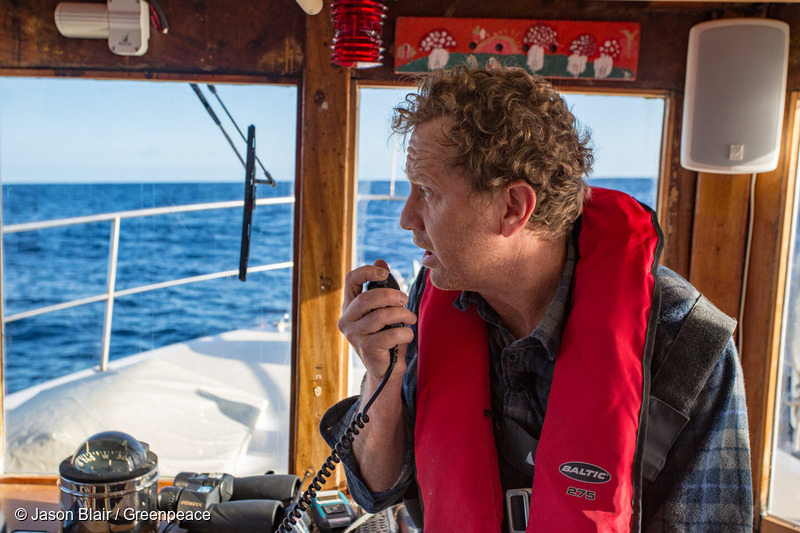
“The most important campaign in recent years was the campaign against new oil exploration.”
“We did a series of actions against new oil exploration at sea between 2016 and 2018 including one targeting NIWA’s MV Tangaroa. The most compelling and important action during that phase of the campaign was with MV Taitu against MV Amazon Warrior off the Wairarapa coast in March 2017, which was carrying out oil exploration for Statoil and Chevron.”
“That campaign led to the Government’s ban on new oil and gas exploration at sea in April 2018.”
“For the MV Amazon Warrior action we needed a boat so we crowdfunded and bought MV Taitu and then we did it up. We took MV Taitu from Wellington to Napier and then went about 50 nautical miles offshore to confront MV Amazon Warrior.”
“MV Taitu was an 80-year-old 15-metre kauri hulled ex-pilot boat that had been delivering the post in the Marlborough Sounds. At 126-metres long, MV Amazon Warrior was the biggest seismic blasting ship in the world. The blasting array it towed behind was seven kilometres long and two kilometres wide.”
“Three of us jumped into the water in the path of MV Amazon Warrior and disrupted its seismic blasting that day. In the process, we deliberately obstructed the ship and broke the ‘Anadarko Amendment’ put in place in 2011 by then-Energy Minister Simon Bridges.”
“The whole operation was difficult to get to that point. So, by far the least stressful part of the whole venture was jumping in the water. It was great to do it after chasing the ship for days to catch up with it.”
“We flew some kites in the air and MV Amazon Warrior had support vessels with it that tried to ram us at night. They also came in close at night and shone their bright lights on us.”
“At night we positioned MV Taitu off to the side of their array and one of their boats tried to cut us off and force us against the array. We had to contact MV Amazon Warrior on the emergency radio frequency to ask them to call off their attack dogs, it was full-on.”
“We breached the 500-metre exclusion zone but it was only when we jumped in the water in front of them that we were charged under the ‘Anadarko Amendment’. We were always prepared to jump in front of the ship, and we did.”
“It absolutely was a David and Goliath confrontation and a really great action that had heaps of support from the public.”
“Doing that action was a real highlight for me, along with the fact that we won the campaign!”
“We had a long experience with mass non-violent protest. About 300 people turned up to blockade the annual oil industry conference with us at Sky City, closing down the various access doors.”
“That work continues today in 2020 with the campaign against Austrian oil giant OMV. In 2019, about 30 people including a Greenpeace climb team boarded and occupied the OMV support vessel MV Skandi Atlantic in the port of Timaru to prevent it from leaving port to meet the huge new OMV oil rig stationed off the coast of Taranaki.”
“We also ran a three-day blockade and closed down the OMV head office in New Plymouth in 2019. OMV’s head of operations in NZ and Australia, Gabriel Selischi, was interviewed recently about Greenpeace’s campaign targeting the company. He told the NZ Herald: ‘I don’t see myself being able to continue to operate as today, and commit large amounts of money if this disruption will become more systematic’.”
“After the offshore oil exploration ban in 2018 we kept going at it, and we’ve had a really nice relationship with Extinction Rebellion, School Strike 4 Climate, and the Oil-Free Seas groups.”
“Then we did the ‘Making Oil History’ tour with SV Rainbow Warrior III in September-October 2018 to celebrate the new offshore oil exploration ban.”
“During the tour we sailed the Warrior to Opotiki and we had a very nice visit with Te Whanau-a-Apanui. It was a great day and a celebration of their activism. We heard all the stories about the Petrobras campaign.”
“We had a very warm welcome and a strong sense that we had shared that struggle. It was a genuine partnership.”
“It was also the same day that I was discharged without conviction over the MV Amazon Warrior protest, when I had broken the Anadarko Amendment in 2017. I had my photo taken with Elvis Teddy during that visit.”
“Since then the main turn we’ve taken is to agriculture, and it is now our main priority campaign, the reason for that being that agriculture is responsible for half of NZ’s carbon emissions. New Zealand is also the world’s largest exporter of dairy products and the largest importer of palm kernel expeller (PKE), and Fonterra is a global player. Agriculture also impacts our freshwater quality and biodiversity.”
“Campaigning on agriculture is relevant both in terms of New Zealand’s emissions and the global impact of the sector through NZ dairy exports and PKE imports.”
“Agribusiness has huge political power in New Zealand.”
“We’ve campaigned to stop big irrigation schemes and to stop the Ruataniwha dam proposal. Now we’re campaigning against synthetic fertiliser as a key enablers of agricultural carbon emissions. It is fossil gas turned into synthetic fertiliser.”
“The most significant thing this year was the cap the Government put on synthetic fertiliser.”
“Getting a restriction on that as part of the freshwater regulations is the single most effective mechanism that they’ve taken on the climate so far.”
“Agribusiness was very shocked that they lost on that after their previous success keeping agriculture out of the Emissions Trading Scheme.”
“So that was very important. We had been running a campaign on it since 2018 and doing actions targeting synthetic fertiliser factories and talking to ministers about the need for it.”
“The Ministry for the Environment had opposed the policy, so Greenpeace wrote policy papers on it to make the case which we circulated to decision-makers and ministers.”
“The Resource Management Act is an effects-based system but it doesn’t address the combined effects of all the diffuse sources such as fertiliser inputs, hence the need to target it as a pollutant and stop it before it goes into waterways.”
“Despite the presence of NZ First in the Coalition Government, that policy got cabinet approval. Now between a quarter and a third of all dairy farms will have to cut their inputs of synthetic nitrogen fertiliser when the cap comes into force.”
“Now we’ve turned to focus more on the climate dimension of agriculture to transform New Zealand away from industrial agriculture to regenerative agriculture.”
“Agribusiness might have a lot of resources but it is vulnerable to campaigning in New Zealand as well as its global consumers who want it to deliver on genuine sustainability.”
“Our other main campaign is the Oceans Campaign. We’ve done successful tuna campaign work in recent years, including targeting the Whiskas factory in Whanganui which was using destructively caught tuna supplied by the Thai Union company.”
“We have also been working to promote a UN Global Oceans Treaty and to persuade the NZ Government to support a centralised process for nominating protected areas on the high seas over the flawed RFMO model, which is already dominated by fishing interests.”
“We’ve also been opposing seabed mining in the Supreme Court recently alongside Kiwis Against Seabed Mining (KASM).”
“In recent years various scandals have surfaced about the NZ fishing industry and the way the NZ Quota Management System (QMS) is managed. These have highlighted the urgent need now for systematic reform of the QMS.”
“The other big part of our work this year has been promoting ‘Build Back Better’. We have published two reports in 2020 with a strong emphasis on regenerative agriculture and public transport infrastructure.”
“We have been meeting with CEOs and government ministers to inform them about our views on the need for a major stimulus package that boosts regenerative agriculture and public transport infrastructure.”
“The two most important successes for Greenpeace over the past three years have been the ban on new oil and gas exploration at sea and the cap on synthetic fertiliser use.”

